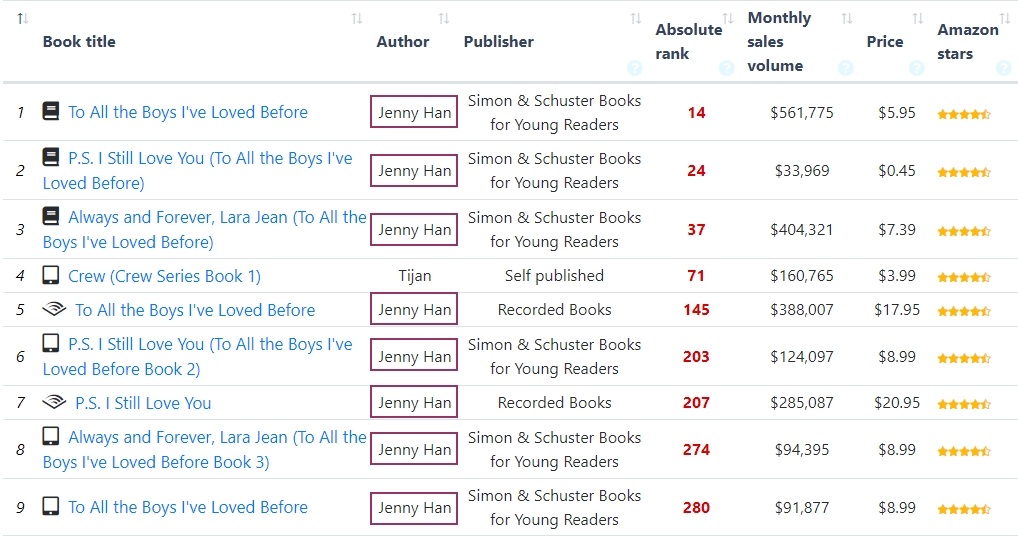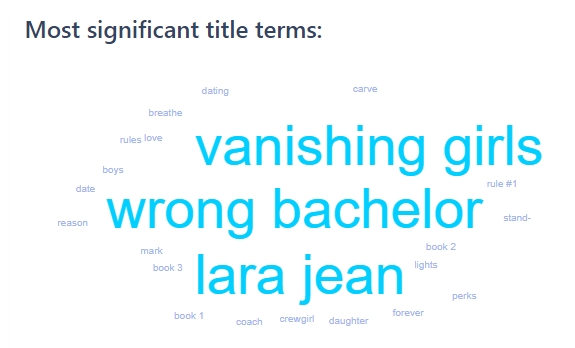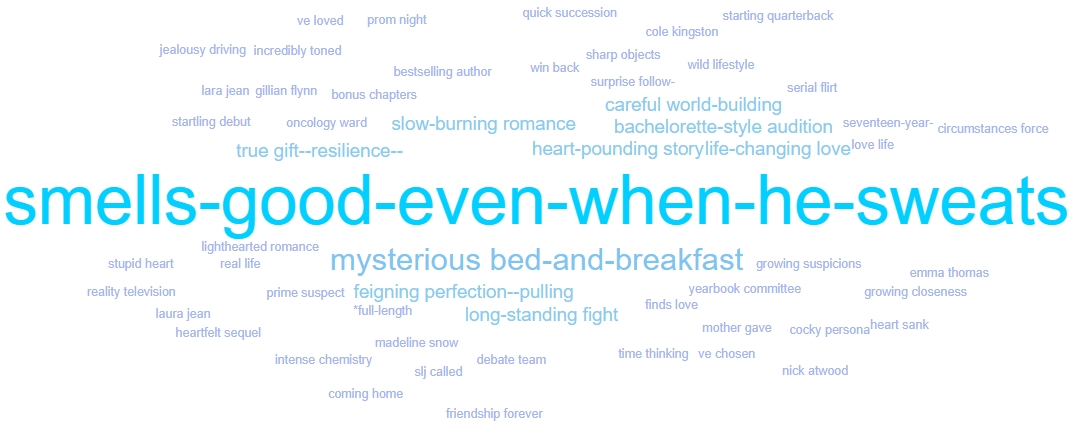A number of marketers and self-published writers overlook the power of a Kindle category to thrust their book to success…or burry it deep within Amazon’s shelves!
Choose an overcrowded category with a fierce competition and you sentence your book into oblivion. But not before spending thousands of dollars on ineffective book promotion and SEO techniques.
To hit the so acclaimed bestseller status and reap the success it comes with it, one must carefully choose their battle field. You cannot win everywhere, so you better avoid the most competitive kindle categories to maximize your chances of success.
Enters Kindle Ranker and its new category analysis panel (free as always) to help you answer two basic questions:
- What is currently selling?
- Is this category/theme worthy of your time?
Overcrowded and competitive kindle categories
If you are a Kindle Ranker user, you must be quite familiar with the classic search interface and its 7 metrics to spot the most competitive kindle categories
Briefly once more:
- The bestseller’s rank and an estimate of the daily sales to be a bestselling author
- The 50th book’s rank and an estimate of the daily sales to reach the front-page of a category’s bestseller list
- Median volume sales – how much money to expect from any given Amazon book category
- Median price – how to price your book
- Volatility – how frequently does the bestseller list change
- New releases – how many newly released books are in the bestseller list
- Indie books – how many indie books successfully made it to the bestseller list (not shown on the above image)
You can read in depth about these metrics and how to use them to your advantage to promote your book in the following article.
The new feature kicks in when you click on any of the search result. It opens a dedicated page per category showing various key new insights.
Let’s say we want to know more about the Books -> Teens -> Romance -> Contemporary category. You simply follow the previous link and get multiple panels inspecting various aspects of the category.
Author competitiveness in Kindle categories
The first panel on the top of the page summarizes the most important figures to keep in mind and introduces a new metric: author competitiveness.
This new metric counts the number of unique authors of the top 20 books. If a single writer published more than three books in the top of the bestseller list, a warning flag is issued as is the case here. You can easily spot the writer in question if you scroll down to the detailed list of books:
Jenny Han (Simon & Schuster Books for Young Readers) has four titles in different formats (kindle, audio and hardcover) featured on the bestseller list of the Contemporary category. Notice the format distribution in the bestseller list overall:
There are four audiobooks in total in this bestseller list (8% of 50 books), two of them belong to Jenny Han! If you did not seriously start thinking about transforming your novel into an audiobook, now is the time!
The quick big picture you get by just a quick glance at the category analysis page help you an informed choice about your course of action. Do you have enough fan base, marketing resources and budget to break into the front page of the bestseller list?
If that’s the case, you will face fierce competition from Jenny Han. Do you have what it takes to outrank her books? Cover, design, title, story, etc.
How to choose the right title for your book
Speaking of titles… what do you usually opt for?
- Word title (e.g. 1982)
- Funny/clever (e.g. In God We Trust: All Others Pay Cash)
- How-to… (e.g. How to stop worrying)
- Intriguing title (e.g. The Dogs I Have Kissed)
- etc.
To get a glimpse of the current trend in every category, I added a cloud word that depicts the most interesting features of book titles:
The most significant words are extracted using the RAKE algorithm. You can check the official research paper if you are a math aficionado. The algorithm is fast and does not need massive input to produce good results (unlink TF-IDF).
I added a very basic title/subtitle analysis module. It calculates the median word count per title and displays a sample of the bestsellers hovering around that median. For the contemporary category, the result looks a bit like this:
I am not claiming that these two new features will magically help you find the title of your dreams, however I firmly believe that they will sparkle some interesting ideas inside that head of yours. And not any ideas, ideas that will probably sell! And really that’s what you should be looking for the most.
More metrics to judge a category’s competitiveness
On the right, you find a pretty visualization of the three indicators you usually find on the main search result.
- Volatility – how frequently does the bestseller list change
- New releases – how many newly released books are in the bestseller list
- Indie books – how many indie books successfully made it to the bestseller list (not shown on the above image)
The rule of thumb to follow is pretty simple. If any of these indicators is red, then you should question whether it this category is really worth your time.
For instance, an 80% volatility means that 16 books shuffle on average on the frontpage bestseller list. Do you have a strategy to address that? How to ensure that your book will not disappear in a few hours once it is on top? etc.
The first step in addressing any problem is asking the right questions. This category analysis page gives you the tools you need to do that.
Further down the page you will see a list of the top 3 bestsellers and the least 3 bestsellers on the front-page:
Usually you can get a pretty good feel about the style of the cover as well as the dominant color to choose for your book, though this particular is biased by the fact that we have many books from the same author.
Finally, you will find a matching cloud word at the end of the category page that highlights the most interesting features (words and sentences) of the book’s descriptions.
Again, you may not get your entire story line derived from it, but any character idea, location, scene, keyword is worth noting.
Remember that this is what’s actually selling right now in this category!
That’s about it! There is a section about KDP categories but I will later write a dedicated post about this one particular panel.
Enjoy this new category analysis feature. Your feedback is most welcome!
Cheers,
Alex from KR
1 thought on “How to avoid the most competitive kindle categories”
Comments are closed.







[…] more about how to avoid the most competitive categories and easily hit the #1 best seller […]